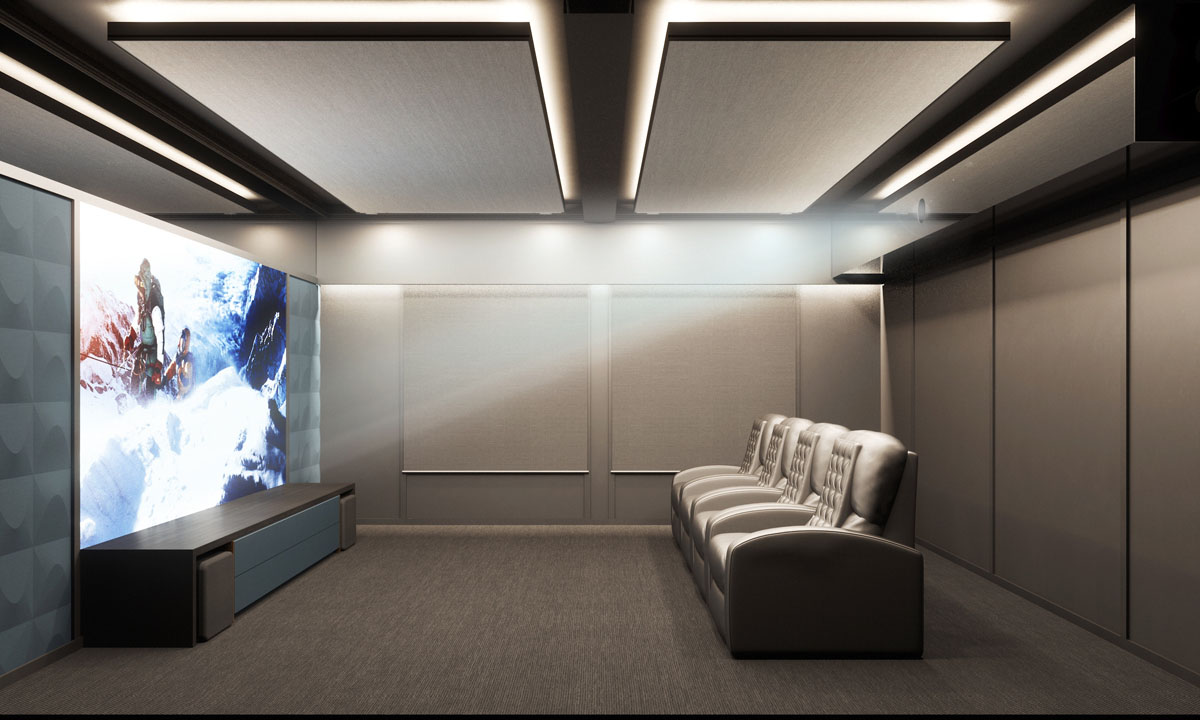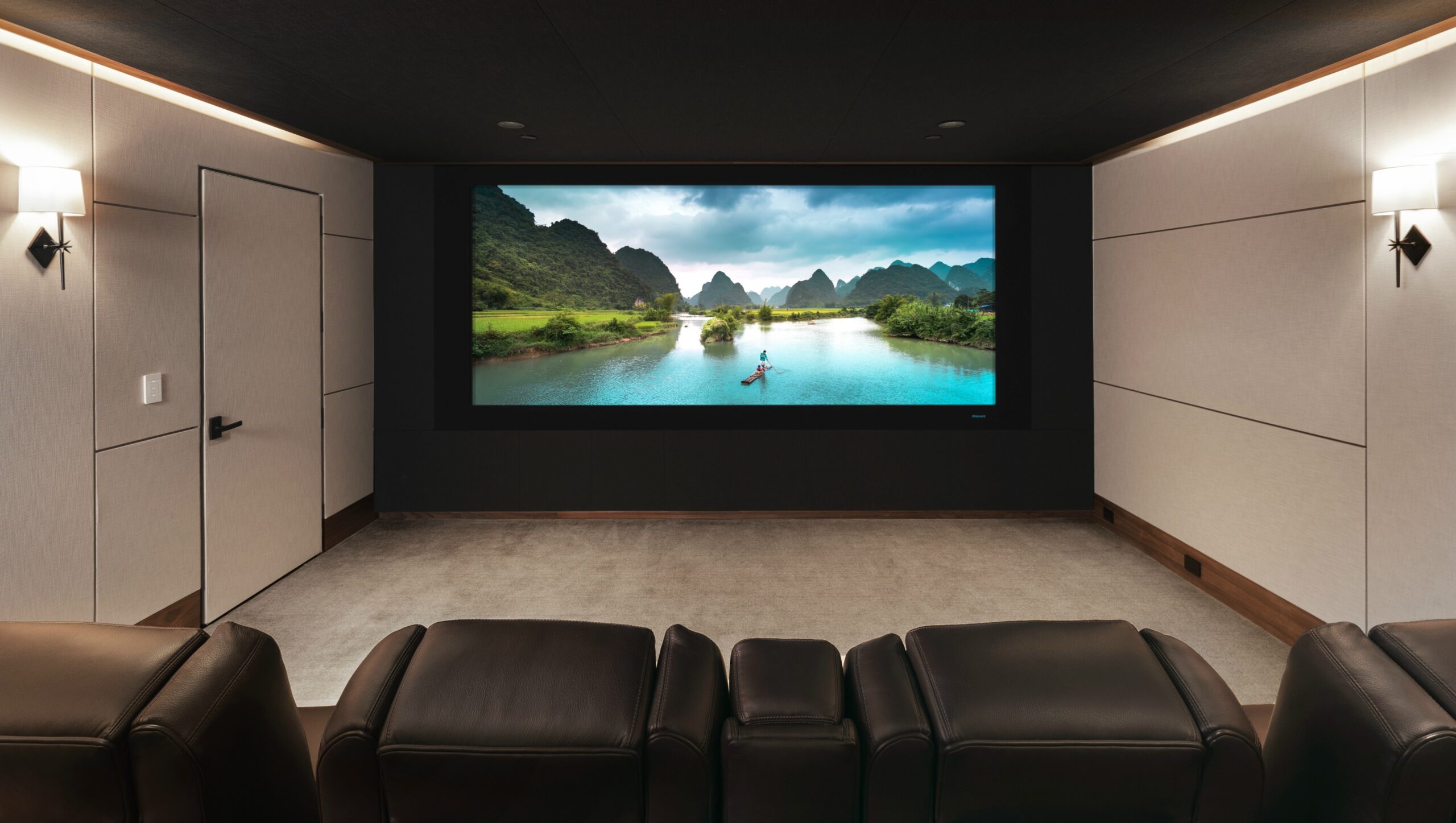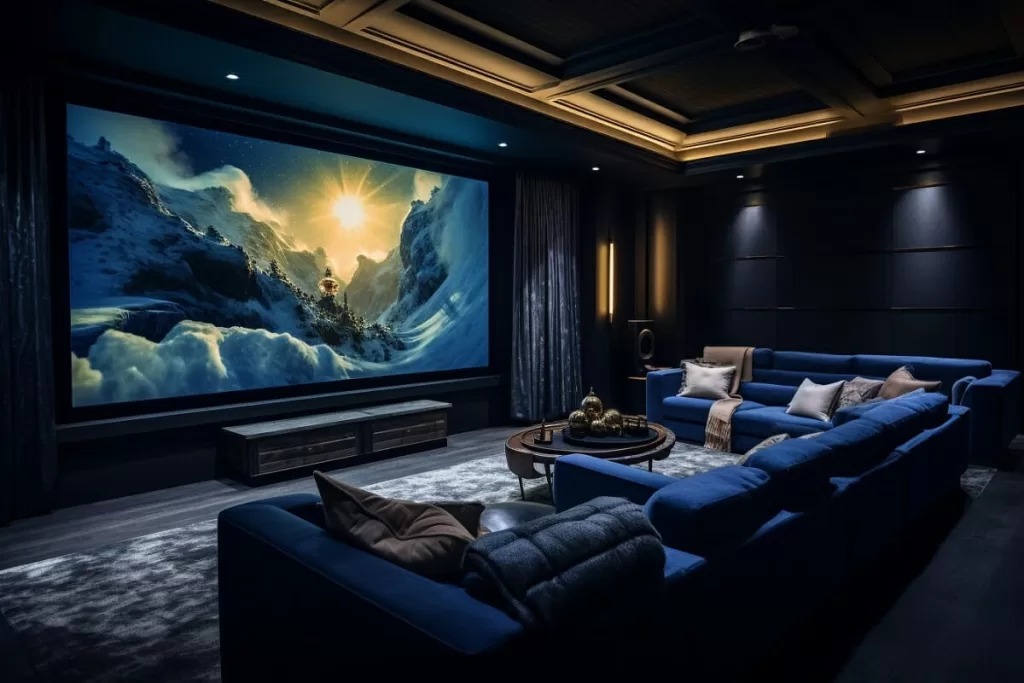Home Theater 101: Whatever You Need to Know for a Cinematic Experience in the house
Developing a home cinema that matches the cinematic experience of an industrial theatre includes careful consideration of numerous parts, including display option, sound systems, and room layout. Whether you are contemplating the perfect screen size or the details of border noise, comprehending these basics is necessary.
Selecting the Right Screen
When establishing up a home theater, selecting the best display can make or break the viewing experience - tampa home theater installation. The display offers as the centerpiece of your setup, influencing image top quality, checking out angles, and total aesthetic. Trick aspects to think about include display resolution, type, and dimension
Initially, establish the appropriate screen size based upon your room measurements and seating range. A general standard is to rest about 1.5 to 2.5 times the angled screen dimension for ideal viewing. Next, pick between numerous screen kinds, such as fixed-frame, mechanized, or retracting screens, each offering distinct advantages. Fixed-frame displays generally supply the most effective image top quality, while motorized choices enable adaptability in area use.
Resolution is another essential aspect. For a truly immersive experience, consider a display designed for 4K or also 8K web content, ensuring intensity and clarity. Furthermore, take into consideration the display's gain, which impacts brightness and contrast; a greater gain can improve illumination in well-lit areas, while a lower gain might be extra appropriate for darker settings.
Picking Sound Equipment
Audio devices is a crucial element of any type of home movie theater system, significantly enhancing the general viewing experience. The choice of audio gear can establish the deepness, clearness, and immersion of sound, important for creating a cinematic environment.
When picking audio tools, take into consideration a border audio system, which normally consists of a receiver, numerous audio speakers, and a subwoofer. A 5.1 or 7.1 channel system is recommended, where the first number stands for the audio speakers and the second the subwoofer, providing an immersive soundscape. The receiver is the heart of the system, managing audio and video clip signals, and should sustain contemporary styles like Dolby Atmos for an improved spatial experience.
Quality speakers are essential; seek models that offer a well balanced noise account with great bass reaction. Floor-standing speakers can generate richer audio, while bookshelf choices conserve area. Additionally, take into consideration cordless alternatives for ease of installation, although wired systems typically supply remarkable performance.

Optimal Seating Arrangements
Creating an optimal home movie theater experience hinges substantially on optimum seating setups. The arrangement of seats plays a critical role in both convenience and watching quality, directly influencing the general motion picture experience.
First, take into consideration the display size and viewing distance. An usual guideline is to place seats at a distance approximately 1.5 to 2.5 times the diagonal size of the display. This makes sure an immersive experience without straining the eyes.
Next, altitude is critical. If your seats is in a tiered format, the back rows ought to be greater than the front to prevent obstructions. For flat seats, make sure that the front row is not too near the screen, and that everyone has a clear view.
Moreover, take into consideration the plan in regards to social dynamics. Group seating can improve the communal experience, while individual seats might be favored for individual viewing.

Last but not least, focus on convenience with ergonomic seating that supports extensive viewing periods. Including reclining chairs or supported seats can significantly improve the experience, making the home theater a recommended destination for both amusement and relaxation.
Lighting and Setting
Efficient illumination and setting are vital parts of a well-designed home cinema, as they significantly influence the viewing experience. The appropriate lighting can enhance the cinematic feeling, while bad selections can diminish it. For optimal results, consider a split lights approach that includes ambient, job, and accent lights.
Ambient illumination provides basic illumination, making sure that the space is not entirely dark, which can stress the eyes. Dimmer buttons are very advised, enabling for changes based upon the web content being watched. Job lighting, such as wall sconces or floor lamps, provides useful illumination for activities like analysis or navigating the space without interrupting the general environment.
Accent lighting can be made use of to highlight her comment is here building attributes or develop prime focus, adding deepness and interest to the room. LED strip lights behind screens or along racks can supply a subtle glow that boosts the aesthetic experience without overwhelming the audience.

Wiring and Installation Tips
A well-planned wiring arrangement is vital for accomplishing ideal performance in your home movie theater system. Proper electrical wiring not just makes sure high-grade sound and video signals however likewise improves the overall visual of your room. Begin by mapping out your design, determining where each component will certainly be positioned, including your display, audio speakers, and receiver.
When choosing cables, prioritize top quality, appropriately determined electrical wiring to reduce signal loss. HDMI cords must be used for video clip connections, while speaker cord must match the specifications of your speakers and amplifier. Go with in-wall rated wires to adhere to safety and security requirements and keep a tidy look.

Conclusion
In recap, producing a remarkable home cinema experience requires cautious factor to consider of different components, including display choice, audio devices, seating arrangements, illumination, and electrical wiring. By prioritizing these factors, a motion picture ambience can be efficiently click here for more info reproduced, permitting for immersive checking out experiences that equal standard theater settings.
Developing a home theater that rivals the motion picture experience of an industrial theater includes cautious factor to consider of several parts, including display option, audio systems, and room format.When establishing up a home theater, picking the ideal display can make or break the watching experience. Next like this off, select in between numerous screen kinds, such as fixed-frame, mechanized, or retractable screens, each offering distinctive benefits. For a truly immersive experience, consider a screen made for 4K or even 8K material, guaranteeing intensity and clearness.In summary, creating a phenomenal home cinema experience requires cautious consideration of numerous aspects, including screen option, audio tools, seating setups, lighting, and circuitry.
Comments on “The Comprehensive Guide to Home Theater Installation Tampa Homeowners Trust”